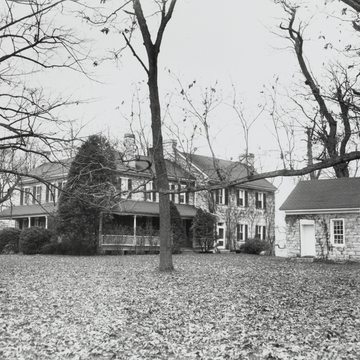Stuart Manor, easily seen from Davis Stuart Road just beyond Lewisburg's expanding southwestern suburbs, mirrors Greenbrier County's earliest settlement, later development, and continued prosperity. John Stuart—soldier, confidant of Thomas Jefferson, first county clerk, and historian—began construction of the L-shaped house in 1789, across the road from his earlier log fort. Faced with random-rubble fieldstone of a warm, brownish gray hue, the house has a one-story, shedroofed porch extending across the facade and the side elevation. In 1820 Lewis Stuart, John's son, built a three-bay addition, somewhat taller than the first section, to the north. Its limestone walls, laid in coursed blocks, have the more familiar blue-gray hue typical of area stone construction. Stuart Manor was restored and modernized under the auspices of architect Floyd Johnson of Charlottesville, Virginia, in the 1970s.
A diminutive one-room stone building, built by John Stuart as an office and thought to predate the house, stands in the yard to the east of the manor. Still farther east is a contemporary guesthouse, incorporating a 1760s log house moved from neighboring Monroe County. Progenitor John Stuart and other members of his family are buried in a cemetery that lies in a field east of the house. The property, still in family hands, is beautifully maintained.














